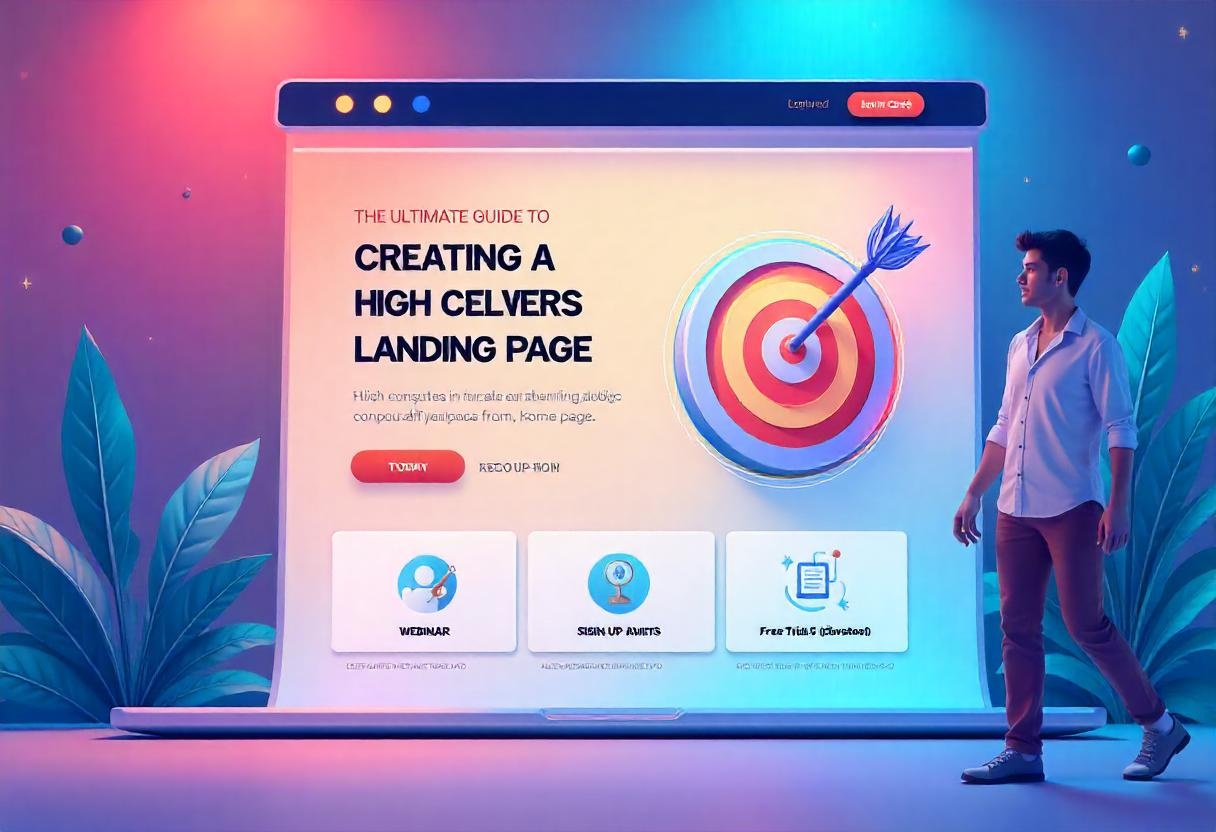The Ultimate Guide to Creating a High-Converting Landing Page
The Ultimate Guide to Creating a High-Converting Landing Page
A landing page isn't just another web page—it's a conversion machine. Whether you're generating leads, selling a product, or growing your mailing list, the design and structure of your landing page directly impact your results.
In this guide, we'll break down the principles of landing page design, explore conversion rate optimization (CRO) strategies, and show you how to create compelling calls-to-action (CTAs) that drive users to take the next step.
What Is a Landing Page?
A landing page is a standalone web page created specifically for a marketing campaign. Its primary goal is conversion—not navigation. Unlike homepages, landing pages focus on one clear objective.
Common landing page goals include:
- Collecting email subscribers
- Promoting product trials or demos
- Selling a single product or service
- Generating leads via a contact form
The best landing pages remove distractions, guide the user journey, and make it easy to take action.
Why Landing Page Design Matters
Design directly influences trust, clarity, and motivation. A cluttered layout, vague copy, or poorly placed CTA can destroy even the best offer.
Well-designed landing pages:
- Establish credibility
- Keep users focused
- Highlight key benefits
- Remove friction from conversion
- Improve quality scores in paid ads
Design is not just how it looks—it’s how it works.
Core Elements of a High-Converting Landing Page
To optimize conversions, your landing page should include these essential components:
1. Compelling Headline
Your headline must immediately communicate the value. It should be clear, benefit-driven, and aligned with your ad or traffic source.
2. Subheadline or Supporting Copy
Explain the offer in one or two short sentences. Reinforce your message and establish trust.
3. Visual Focus
Use a featured image or video that illustrates the product, service, or result. Real people or authentic screenshots work best.
4. Call-to-Action (CTA)
The CTA should be bold, easy to find, and action-oriented. Use verbs like “Start,” “Get,” “Claim,” or “Download.”
5. Lead Form or Button
Keep it short—only ask for the necessary info. For more complex forms, consider a multi-step format.
6. Trust Signals
Add social proof such as testimonials, client logos, security badges, or media mentions.
7. Mobile Optimization
Ensure all elements load fast and display clearly on mobile screens.

Conversion Rate Optimization Techniques
Optimizing your landing page means testing and improving performance over time. Here are proven techniques to boost conversions:
1. A/B Testing
Test one element at a time—such as the CTA color, headline copy, or form placement—and measure results with analytics tools.
2. Message Match
Make sure your ad copy, email subject, or social media post matches the landing page message. Consistency builds trust.
3. Use of Urgency and Scarcity
Phrases like “limited time,” “only 3 spots left,” or countdown timers can drive immediate action.
4. Visual Hierarchy
Direct attention using bold headlines, button contrast, white space, and directional cues like arrows or images of people looking toward the form.
5. Remove Navigation and Exit Points
Eliminate distractions. The only way out should be through your CTA.
6. Personalization
If possible, use dynamic content to tailor the message based on location, behavior, or user segments.
Common Landing Page Mistakes to Avoid
Even with great design, these missteps can hurt your results:
- Too Much Text: Users skim—use short paragraphs, bullets, and bold highlights
- Unclear Value Proposition: Don’t assume users know why it matters
- Slow Load Time: Page speed directly impacts conversion and SEO
- Generic CTA: Vague buttons like “Click Here” won’t convert
- Lack of Mobile Testing: Always preview and test on real devices
Avoiding these errors helps you maintain focus and build trust with visitors.
Tools to Build and Optimize Landing Pages
Whether you build from scratch or use a platform, these tools help:
- Unbounce / Instapage / Leadpages: Drag-and-drop builders with built-in A/B testing
- Elementor / Beaver Builder: Page builders for WordPress
- Figma: Great for wireframing and prototyping
- Google Optimize / VWO: A/B testing platforms
- Hotjar / Microsoft Clarity: Heatmaps and behavior analytics
Choose based on your team’s skills and your traffic volume.
Real-World Example: A 2.5x Increase in Conversions
A SaaS startup redesigned its trial landing page using the principles above. Changes included:
- New headline focused on the main benefit
- Shorter form (only name and email)
- Social proof from recognizable client logos
- CTA changed from “Submit” to “Start Free Trial”
- Embedded video testimonial added below the fold
Result:
- Conversion rate rose from 7.2% to 18.4% in 30 days
- Cost-per-acquisition (CPA) dropped by 42%
- Average time on page increased by 55%
Conclusion: Design for Action, Not Just Attention
A high-converting landing page isn’t just pretty—it’s purposeful. Every element should support a single goal: getting the user to take action.
By following best practices in design, copywriting, and CRO, you can create landing pages that not only attract visitors but turn them into leads and customers.
In 2025, where user expectations and competition are higher than ever, clarity, speed, trust, and persuasion will separate successful landing pages from forgettable ones.
Build yours with intention, test constantly, and optimize for results—not guesses.


